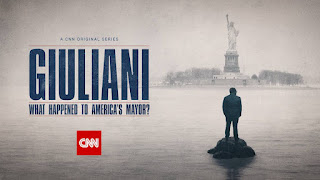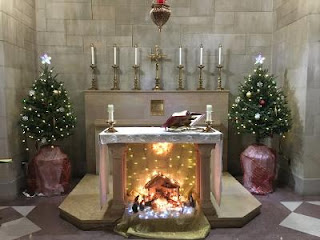Today is the 60th anniversary of the opening of the Second Vatican Council by Pope Saint John XXIII, whom the Church calendar commemorates today. It is well known that Pope Saint John XXIII had been thinking about the possibility of a council for some time prior to his surprise announcement of his plan in January 1959. As a young priest, Angelo Giuseppe Roncalli had served as secretary to the Bishop of Bergamo and taught Church history in the seminary, immersing himself in accounts of the vigorous religious renewal of the Church in Lombardy thanks to the Council of Trent, which he himself later characterized as a time of potent reawakening of energy unequaled in any other period of church history. There seems little reason to doubt that, as pope, he hoped to promote a similar reawakening of energy through the means of another council.
Nor was this idea unique to him. Because of the Italian conquest of Rome in September 1870, the First Vatican Council had adjourned with its work unfinished. Once the Roman Question had been satisfactorily solved, thanks to the Reconciliation achieved by Mussolini, there were multiple suggestions at the highest levels for another ecumenical council to complete its work in the 20th century. Roncalli may or may not have been aware of those proposals, but he was a close friend of Dom Lambert Beauduin. According to Thomas Stransky, « during their frequent private evenings together in Paris, when the future pope was nuncio to France, the two of them fantasized about the need and possibility of another ecumenical council. » And Joseph Komonchak has suggested that the possibility of a Council may have been discussed during the 1958 conclave. Cardinal Ottaviani later claimed that he and Cardinal Ruffini had suggested the idea of a council to Cardinal Roncalli during the conclave. Cologne’s Cardinal Frings in his subsequent memoir claimed to have said to his secretary as they were returning home from the conclave that he had a feeling that a Council would take place soon.
Whatever the influences, Pope John did indeed call a council early in his pontificate, and after more than three years of preparation the Council convened 60 years ago today on October 11, 1962, the feast (as it then was) of the Maternity of Mary. Komonchak calls him « a man with a deep historical consciousness, » and he credits « this combination of historical awareness and of a conviction of a need to embrace new challenges and opportunities that was to mark the whole pontificate of John XXIII and to lead him in the course of the Council’s preparation and first session to make the decisions that enabled it to live up to the hopes he set in it. »
As was unfortunately often the case, Yves Congar was grumpy on the Council’s opening day. He left the Basilica during the Opening Mass, thus missing the Pope’s famous opening address. That speech has rightly been remembered as expressing the Pope’s personal hopes and aspirations for the Council. Gaudet Mater Ecclesia, the Pope began, « Mother Church rejoices that by a singular gift of divine Providence, the long-for day has finally dawned on which, under the protection of the Virgin Mother of God, whose maternal dignity is celebrated today, the Second Vatican Ecumenical Council, is solemnly opened here beside the tomb of St. Peter. » (Believe it or not, after 60 years, there is still no official Vatican English translation of this memorable speech! So I am using that by Jospeh Komonchak – available at https://jakomonchak.files.wordpress.com/2012/10/john-xxiii-opening-speech.pdf.).
In his address, Pope John revisited the role of ecumenical councils in the history of the Church. Whenever Councils are held, he declared, they « solemnly proclaim this union with Christ and his Church, and they spread everywhere the light of truth, give correct guidance to the lives of individuals, of families, and of societies, stir up and fortify spiritual energies, and continually raise minds towards true and eternal goods. » Undoubtedly he hoped that something similar would result from this Council.
There was, also, a second speech which Pope John gave that day, which offers its own unique insight into Pope John’s character and piety. That evening, a torchlight procession of thousands of people came to Saint Peter’s Square in celebration of the Council’s opening earlier that day. Pope John had not planned an address, but seeing the crowd he went to his window and spoke extemporaneously. He began with a now famous reference to the light of the moon, which has given it the name, Discorso alla Luna. « I hear your voices. Mine is only a single voice. But what resounds here is the voice of the whole world; here all the world is represented. One might even say that the moon rushed here this evening – Look at her high up there – to behold this spectacle. »
It was a very short and casual talk, in which he expressed fundamental spiritual sentiments such as this: « Let us continue, therefore, to love each other, to love each other so, by looking at each other in our encounters with one another: taking up what unites us and setting aside anything that might keep us in a bit of difficulty. » After mentioning the Council of Ephesus (on the feast which celebrated the dogma of Mary’s divine motherhood, affirmed at Ephesus in 431), his speech briefly referenced that day’s opening of the Council: « This morning there was a spectacle that not even the Basilica of Saint Peter’s – which has four centuries of history – could ever have contemplated. We belong, therefore, a time in which we are sensitive to the voices that come from above: and we want to be faithful and to stand according to the directions which our Blessed Christ has given us. »
The conclusion of the Pope’s talk is itself also famous. « When you go back home, you will find your children: and give them a hug and say, “This is a hug from the Pope. You will find some tears that need to be dried: speak a good word: ‘The Pope is with us, especially in times of sadness and bitterness.’ And then all together let us encourage one another: singing, breathing, weeping, but always full of faith in Christ who helps us and who listens to us, let us continue on our journey. »
Photo: Discorso alla Luna. Notizie/Italia/News.
Discorso alla Luna Translation Copyright 2012 Fr. Stefano Penna and Br. Scott Surrency OFM Cap.





